Football
Film Look: Breaking Down OSU’s New OC (Part 1)
How a huge part of Gleeson’s Princeton playbook fits OSU’s personnel.
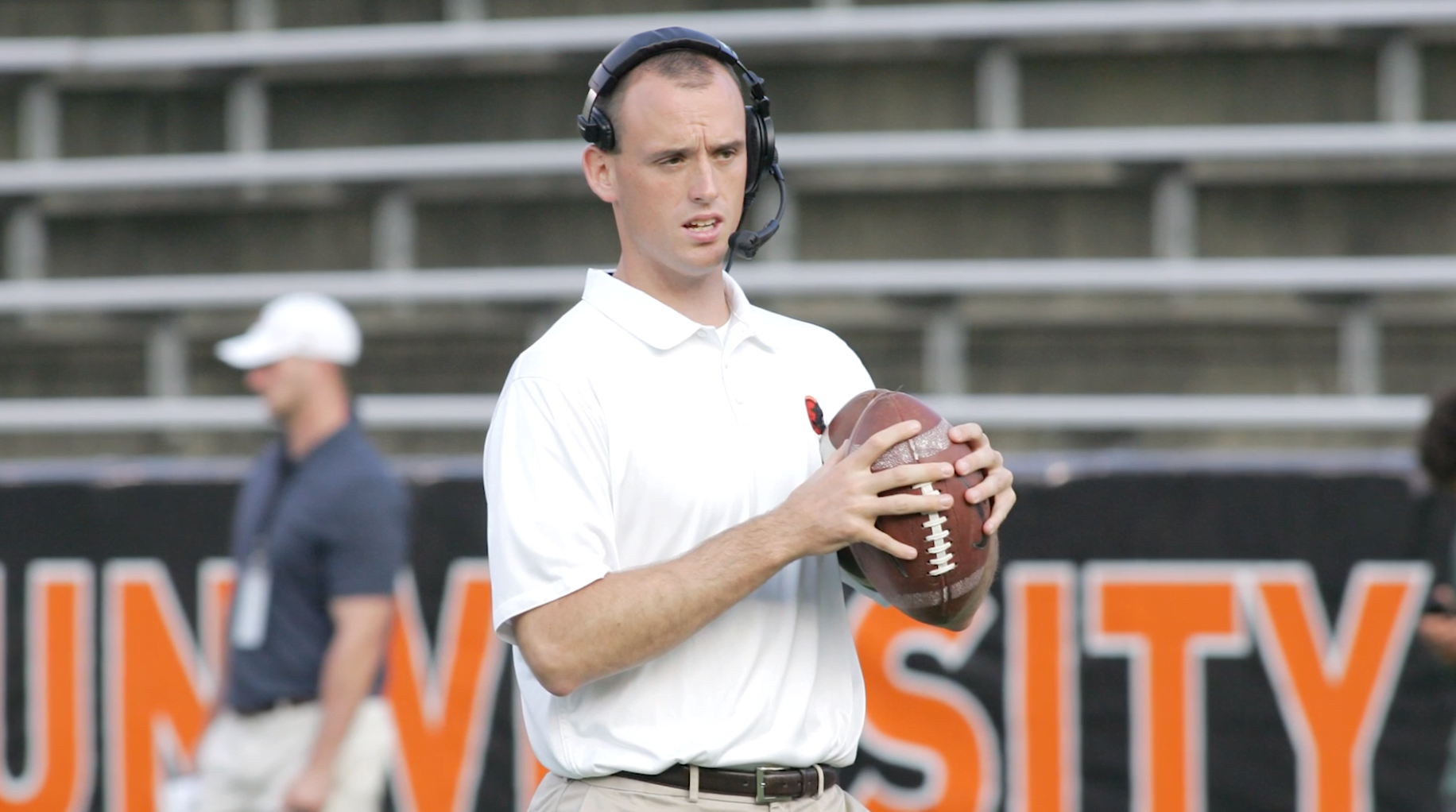
On Sunday afternoon, Oklahoma State revealed it had hired Princeton offensive coordinator and quarterbacks coach Sean Gleeson to replace Mike Yurcich on the Cowboys’ coaching staff. Gleeson had been with the Tigers since 2013, serving as running backs coach, special teams coordinator, and most recently, offensive coordinator and quarterbacks coach. The young playcaller doesn’t boast a long, impressive resume of coaching stops, but he showed in his two years as OC for Princeton that he is innovative and can bring some creativity to this OSU offense.
Kyle Boone did a great job of discussing why Cowboy fans should be excited about the hire, and covered a lot of key stats produced by the Tigers’ offense the past two seasons. So, for this post (and the posts to follow), I wanted to dive into Gleeson’s offensive scheme and some new looks we might see from the Pokes in the years to come.
As I mentioned above, Gleeson had been the offensive coordinator for the past two years at Princeton. During that time, the Tigers primarily based out of 12 personnel, meaning one running back and two tight ends. Shown below is one of their base formations, two tight ends on the line of scrimmage, a receiver split wide to each side of the field and the running back next to the quarterback in the shotgun.

Gleeson runs a no-huddle, up-tempo style of offense, moving these tight ends all around the formation. In the image below, you see Princeton’s tight end Graham Adomitis (No. 80) and fullback/tight end Cody Smith (No. 39) split out to the right as part of the Trips look to the field side.

Gleeson will also line up one tight end on the line of scrimmage and the other at H-back.

One last formation I wanted to show in this initial breakdown is Gleeson’s Trips look to one side with a “nub” tight end. The “nub” side is the side of the field with a single tight end and no wide receivers. As Cody Alexander explains on MatchQuarters.com, this forces the defense to “acknowledge a true ‘run’ side, while also defending multiple receiver formations. Offenses that utilize TE sets can create leverage issues or force a secondary player to be left by his lonesome against a bigger player”.
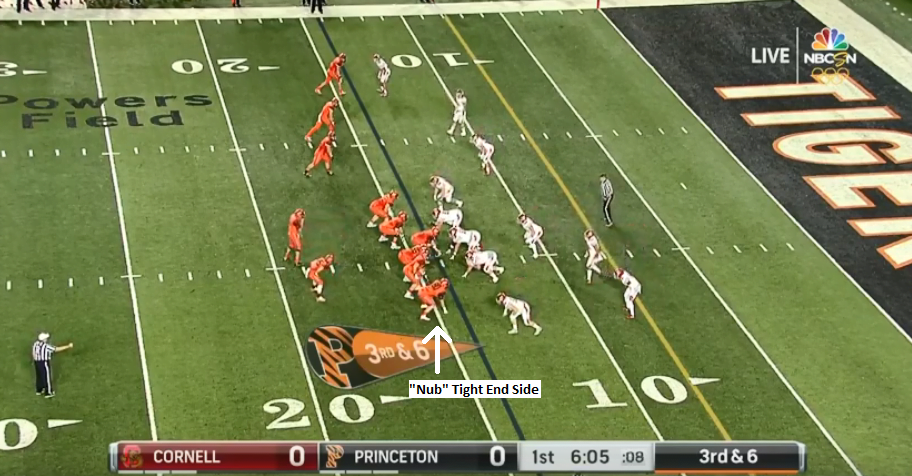
Having versatile players (for the Ivy League) at the tight end position allowed Gleeson’s offense to operate quickly and efficiently, as he was able to move these players around to different spots on the field and exploit mismatches. We saw Oklahoma State show some two-Cowboy Back looks last season, but with talented players like Jelani Woods returning and high-upside newcomers like Grayson Boomer coming in, I would love to see more dual-Cowboy Back sets in 2019. I think the Pokes have the talent at Cowboy Back to run these formation, but it will definitely be a learning experience.
By using multiple tight ends, Gleeson is trying to create more gaps for his opponents to defend and expose mismatches in the passing game by getting a slower linebacker or smaller safety lined up on one of his TEs.
In terms of quarterback play, Gleeson had more of pro-style guy in Chad Kanoff running the show in 2017, and then had a dual-threat player in John Lovett this past season. I was really impressed by how he was not only able to adjust his offense to fit both players’ strengths, but was successful while doing it.
Gleeson and the Tigers had a fairly balanced attack in his two seasons as playcaller. If you didn’t respect the pass, Princeton would carve you up using play-action, screens, RPOs and straight drop backs, and in turn, if you played them soft — they would ram it down your throat on the ground.
On the ground Gleeson brings a lot to the table, the Tigers ran power, both inside and outside (stretch) zone, counters, draws, pin and pull sweeps, draws, and got the quarterback involved, especially this past season. Through the air, you will see some Air Raid concepts that we’ve seen from Oklahoma State teams in the past, along with some deep shots, and Gleeson really excelled in the short to intermediate passing game.
The Tigers also came out in split-backfield looks on occasion, and I would expect Gleeson to utilize this even more in Stillwater with guys like Chuba Hubbard, Dezmon Jackson, LD Brown, Jahmyl Jeter and Deondrick Glass at his disposal.

Overall, I would say even though Princeton showed a lot of multiple tight end looks, their offense was still very unpredictable and the Tigers ran a variety of different formations. In addition, Gleeson did a great job of utilizing pre-snap movement and misdirection to catch the defense off guard. It’s a spread offense that exclusively operates out of the shotgun, but there are a lot of creative, new concepts that we haven’t seen in OSU offenses of recent years.
In the posts to follow, I’ll take a deeper dive into the ways the Tigers hurt teams both through the air and on the ground, and take a look at just why a lot the “football minds” on social media are gushing over this Oklahoma State hire.

-

 Football3 days ago
Football3 days agoFour-Star Quarterback Adam Schobel Commits to Oklahoma State, Flips from Baylor
-
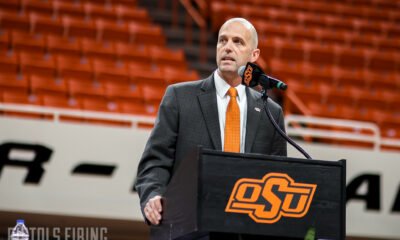
 Hoops3 days ago
Hoops3 days ago‘Keep Turning Over the Rocks’: Looking at the Portal Landscape as Lutz Looks to Solidify His First OSU Roster
-
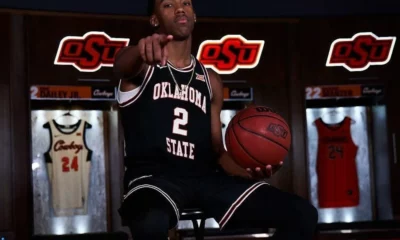
 Hoops3 days ago
Hoops3 days agoFour-Star Signee Jeremiah Johnson Reaffirms Commitment to Oklahoma State after Coaching Change
-
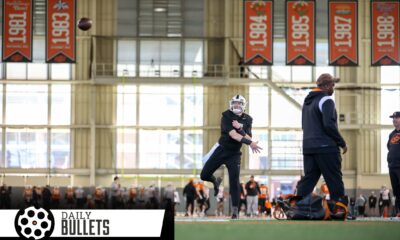
 Daily Bullets3 days ago
Daily Bullets3 days agoDaily Bullets (Apr. 23): Pokes Land Four-Star Quarterback, Retain Talent from Mike Boynton Era






